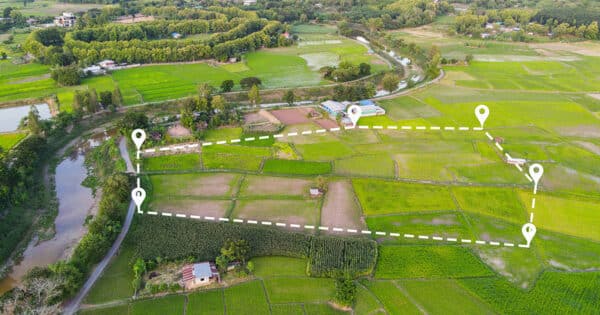The is article first appeared in PI Focus Magazine – July 2020
Following the Damages for Bereavement (Variation of Sum) (England and Wales) Order 2020, the amount of the bereavement award in Fatal Accident Cases has increased from £12,980 to £15,120. This applies where the death occurs on or after 1 May 2020. If the death was before this date, the amount will still be £12,980. This is the first increase in the bereavement award since April 2013.
While this is an improvement, I believe that this is still too low. No sum of money can bring back a loved one, of course. But this token amount, in my view, hardly provides adequate compensation for the grief caused by the loss of a close relative. In Scotland, by contrast, the amount of the bereavement award is decided on a case by case basis, and claimants there have received awards of up to £140,000 for this head of loss.
Another issue is that the categories of people who are eligible to claim bereavement damages are extremely limited. You can only claim if you are a spouse, civil partner, or parent of an (unmarried) child under 18. This is apparently soon due to be extended, so that it will also include unmarried partners who had lived together for at least two years.
This follows the case of Smith v Lancashire Teaching Hospitals NHS Foundation Trust and Others (2017), where the court decided that, in not allowing long term cohabitees to claim bereavement damages, the Fatal Accidents Act 1976 was not compatible with the European Convention on Human Rights. The change was proposed by a draft Remedial Order in May 2019, although it has not yet been implemented.
Despite this proposed change, the class of people who can claim is still very limited. Couples who have co-habited for less than two years are still excluded. A child cannot claim a bereavement award for the loss of a parent. If a child is under 18 when he has an accident, but turns 18 before his consequent death, his parents cannot claim a bereavement award. If the child was illegitimate, the mother can claim, but a father cannot. In a society where increasing numbers of couples decide to settle down without getting married, and many children are therefore born ‘out of wedlock’, it seems both outmoded and offensive to make a distinction on the basis that a child is ‘illegitimate’.
Only one award can be claimed. If there are two parents of a child under 18, they would therefore share the award of £15,120 between them.
At the start of this year, APIL appealed to the government to carry out a root and branch review of the system for awarding bereavement damages. However, the government disappointingly declined to do this. It stated that it ‘does not accept that the existing provisions on bereavement damages are discriminatory.’ It believes that ‘the existing system involving a fixed level of award and clear eligibility criteria represents a reasonable, proportionate and practical approach, and [the government] does not have any plans for wider consultation on the bereavement damages regime or the FAA more generally.’
Recent case law
There have been a number of recent case law developments in relation to fatal accident claims.
The case of Knauer v Ministry of Justice (2016) UKSC 9 corrected one long-standing injustice in relation to fatal accident cases. Up until then, and ever since the House of Lords cases of Cookson v Knowles (1979) and Graham v Dodds (1983), the multiplier for loss of dependency had been calculated from the date of the deceased’s death, rather than from the date of trial. This meant that, if for example, the trial took place two years after death, and the multiplier from the date of death was ten, the multiplier would be reduced to eight to reflect the fact that two years had elapsed since the death.
In Knauer, the Supreme Court unanimously agreed to rectify this unfair anomaly, so that the multiplier would be calculated from the date of trial. The court reflected that the legal landscape had changed considerably from the time of Cookson and Graham, when calculation of future losses was more rough and ready, and actuarial evidence had usually been discouraged. As a result of the decision in Knauer, the position now is that the losses from the date of the death to trial are calculated separately, and future losses are worked out using a multiplier from the date of trial or settlement.
Another useful case is Kimathi and others v FCO (2016) EWHC 3005 (QB). This was not actually a fatal accident case itself, but it dealt with an issue that is very pertinent to such cases. It was one of the cases brought by Kenyans who alleged abuse by the British government during the Mau Mau insurgency in the 1950s and 1960s. Unknown to the claimant’s solicitors, the claimant had died seven months before his case was commenced at the High Court. The claim had been issued in the dead man’s name. There was no will or letters of administration.
The court re-stated the principle that a claim cannot be brought in the name of a deceased person, and the principle that an administrator cannot sue under s.1 of the Law Reform (Miscellaneous Provisions) Act 1934 unless a grant of letters of administration has been obtained. The court held that the claim was a nullity, and that it therefore had no discretion retrospectively to correct the defects. This is a reminder to practitioners dealing with fatal accident cases that, if the deceased person died intestate, letters of administration need to be applied for.
The case of Arpad Kore Senior v Lee Brocklebank (2019) EWHC 3491 (QB) considered issues arising from the acceptance of Part 36 offers in fatal accident cases. In this case, a letter of claim was written on behalf of Mr Kore, the deceased’s father. After admitting liability, the defendant’s solicitors made a Part 36 offer of £12,185. Proceedings had not been issued. The claimant’s solicitors sent an email accepting the offer. However, later the same day, they sent a second email stating ‘Further to my earlier email, I write to clarify that the acceptance of the Part 36 offer is in relation to the funeral expenses only. The dependency claim will continue. If you are happy to proceed on these terms, please pay the cheque to us of the agreed amount’.
There were other dependants, including the mother and sisters of the deceased. Mr Kore subsequently modified his argument and alleged that only his claim, and not that of the other dependants, fell within the scope of the Part 36 offer. The defendant argued that all of the claims had been compromised by the offer.
The letter of claim (and all other correspondence written by the claimant’s solicitor prior to acceptance of the Part 36 offer) referred only to Mr Kore, and did not make reference to any other claimant. Section 2(3) of the Fatal Accidents Act 1976 provides that ‘Not more than one action shall lie for and in respect of the same subject matter of complaint’. However, the court held that this section did not apply to this case, because proceedings had not been issued at the time of acceptance of the offer.
It is possible for more than one claimant to make fatal accident claims against the defendant before proceedings have been issued or served. The claims of the other dependants could therefore continue (although Mr Kore was not entitled to claim any further damages on his own behalf, as the acceptance of the Part 36 offer had compromised his claim).
The case of AB v KL (2019) EWHC 611(QB) dealt with the question of the standard of proof that should be used by the court when determining whether the deceased would have provided for the alleged dependants in the future. In this case, the claim for future dependency included items such as the contributions that the deceased would have made towards his sons’ weddings and first home purchases.
This was a hypothetical exercise and no one could say with certainty what, if anything, the deceased would have paid towards these items had he lived. However, a claimant is not required to prove this on the balance of probabilities. As long as the chance of this happening was more than fanciful, the court would award damages, although the amount awarded would reflect the chance of it happening (for example, the damages awarded might be lower if the chance of its happening was 20% rather than 30%).
One further case, now 13 years old, is also worth remembering: Thompson and others v Arnold (2007) EWHC 1875 (QB). This confirmed that where a claimant obtained a settlement or judgment for their personal injury claim and then died as a result of that same injury or illness, their dependants were precluded from bringing a fatal accident claim. To attempt to do so would be an abuse of process.
This was a long-established principle established in Read v Great Eastern Railway (1868). Moreover, the Fatal Accident Act 1976 provides that a claim can only be brought if the deceased, immediately before their death, had the right to bring a claim (and if they had already settled their claim, they would of course not have such a right).
In Thompson, the dependants sought to argue that Read was wrongly decided, and that this principle was incompatible with the Human Rights Act 1996. The reason that the case got to this stage was that both the deceased’s solicitor and barrister had been unaware of the above principle. They had advised the deceased that she could settle her case before her death and that, following her death, her dependants would also be able to bring an action. The dependents’ claim was dismissed.
The moral of the tale is that practitioners should be very careful about advising a claimant to settle an injury or industrial disease claim where there is a risk that the claimant may die from that injury. The authors of Kemp and Kemp helpfully advise that: ‘The correct procedure to avoid the extinction of the FAA claim whilst obtaining some money for the victim prior to death is to apply for an interim payment or provisional damages.There is no reason why the interim payment cannot be substantially the whole claim but, if there is no final settlement or determination, then the FAA claim can be joined in the proceedings after death and the dependency assessed.’







